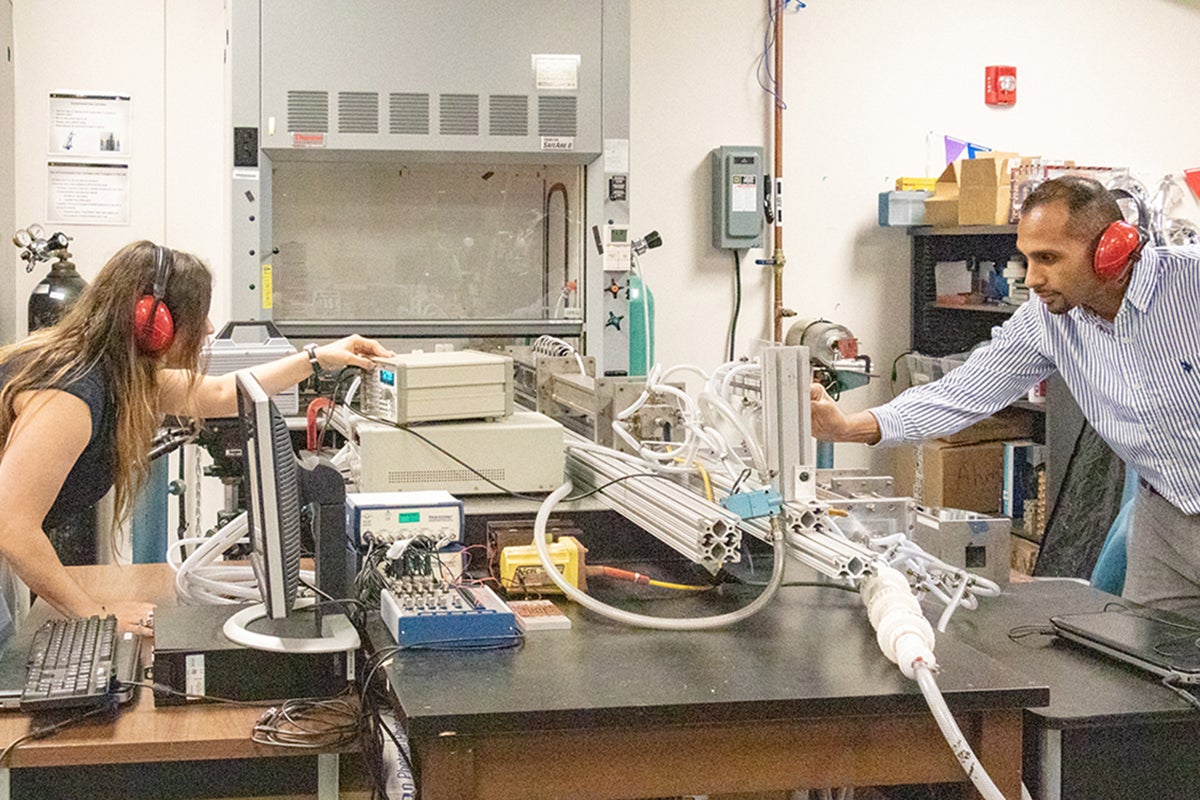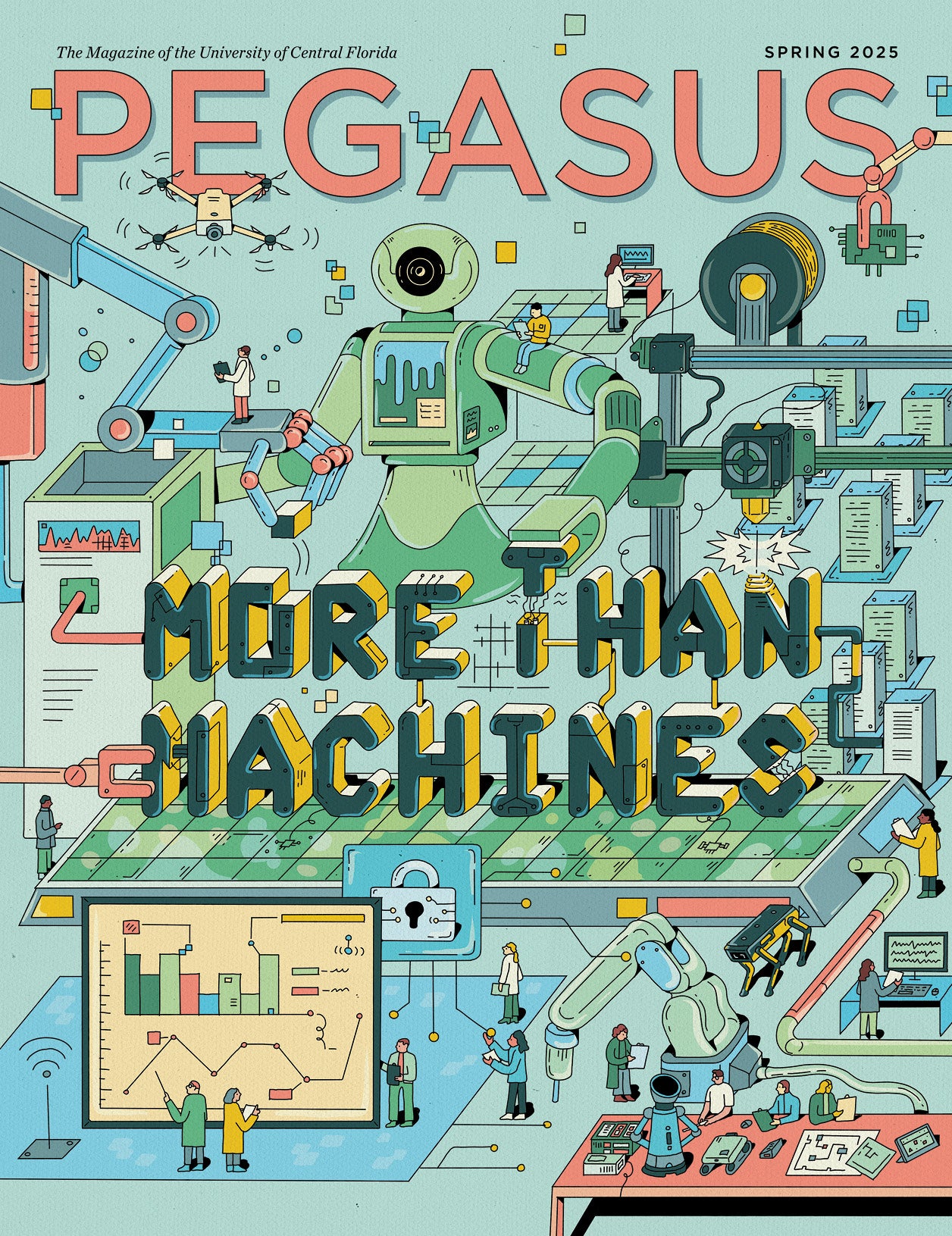Type Ia supernovae are thermonuclear explosions of white dwarf stars that release more energy than the Sun emits in a billion of years. The exact mechanism of these explosions has long been a mystery – until now.
In a new study published in Science Magazine, researchers detail the mechanisms that control the transition from a slow subsonic burning to supersonic detonations for terrestrial gas explosions and thermonuclear supernovae. Astronomers study Type Ia supernovae in part as a tool used to improve estimates of the expansion rate and age of the universe.
An earlier version of this story posted Nov. 1 incorrectly linked the research findings to the Big Bang. The research can potentially aid the understanding of certain kinds of supernovae.
The researchers from the University of Central Florida, University of Connecticut, Texas A&M University, the Naval Research Laboratory, and the Air Force Research Laboratory offer details about the mechanisms that likely are involved in both Type Ia supernovae and hypersonic jet propulsion.
“We defined the critical criteria where we can drive a flame to self-generate its own turbulence, spontaneously accelerate, and transition into detonation,” says Kareem
Ahmed, an assistant professor in UCF’s Department of Mechanical and Aerospace Engineering and co-author of the study. “We’re using the turbulence to enhance the burning to the point where it transitions into a violent detonation. The same process is likely to occur in the thermonuclear detonation of supernovae, which are exploding stars in simple terms,” Ahmed says. “In our lab, we’re taking a relatively slow flame to where it’s propagating five times the speed of sound.”
The researcher uncovered the universal criteria for a transition to detonation while exploring methods for hypersonic jet propulsion.
“We explored this mechanism as we investigate supersonic burning regimes for propulsion,” Ahmed says. “The mechanism is general enough to be applied to astrophysical explosions.”
The key is applying the right amount of turbulence to an unconfined flame until it starts to generate shocks and self-accelerate to produce a Mach 5 detonation wave, he says.
Applications for the discovery could include faster air and space travel and improved power generation. The discovery was made by using a unique turbulent shock tube that allowed explosions to be created and analyzed in a contained environment. Ultra-high-speed lasers and cameras were used to measure the explosions and help indicate what factors were needed to reach the point where a flame transition to a detonation.
The unique turbulent shock tube facility was developed at UCF’s Propulsion and Energy Research Laboratory, for testing hypersonic combustion regimes.
Co-authors of the study were Alexei Y. Poludnenko, an associate professor in the University of Connecticut’s Department of Mechanical Engineering and the study’s lead author; Jessica Chambers, a doctoral student in UCF’s Department of Mechanical and Aerospace Engineering; Vadim N. Gamezo, with the Naval Research Laboratory; and Brian D. Taylor, with the Air Force Research Laboratory.
The authors of the study acknowledge the long-term support by the Energy, Combustion and Non-Equilibrium Thermodynamics Portfolio of the Air Force Office of Scientific Research in the areas of turbulent combustion and detonation via grants 12RSA-MFD001, 15RT0942, 16RT0673/FA9550-16-1-0441 and 19RT0258/FA9550-19-0322 (Program Manager: Dr. Chiping Li).
The work was also supported in part by the National Aeronautics and Space Administration via grant NNH12AT33I (Technical Monitor: Dr. Keith MacGregor), and the Alpha Foundation for the Improvement of Mine Safety and Health (Technical Monitor: Dr. Thomas Barczak) via grant AFC215FO-73. Computing resources were provided by the Department of Defense under the Frontier project award and by the Naval Research Laboratory.
Ahmed earned his doctoral degree in mechanical engineering from University at Buffalo – The State University of New York. He worked at Pratt & Whitney Military Engines and Old Dominion University prior to joining UCF’s Department of Mechanical and Aerospace Engineering, part of the College of Engineering and Computer Science, in 2015. He is a faculty member of The Center for Advanced Turbomachinery and Energy Research, associate fellow of the American Institute of Aeronautics and Astronautics, AFRL Faculty Research Fellow, and a member of UCF’s Energy Conversion and Propulsion Cluster.
Learn more about UCF’s role in the aerospace and defense industries.




